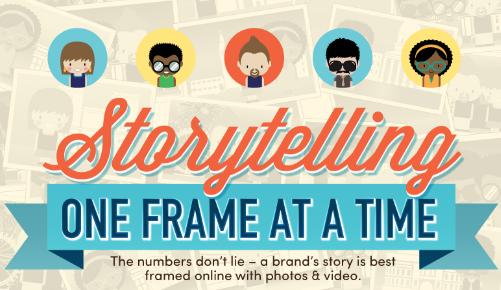Visual story telling is the art of using pictures both motion and still to tell a story. It is an art because it takes a lot of practice to master. It needs a lot of precision and bold craft to ensure that your story communicates to your target audience. The art of visual story telling mostly applies to those whose interests lie in news video blogs or any other blog that uses videos and pictures to communicate.
So, what does visual story telling involve?
It involves lining up videos or photographs the way you want them to communicate– It is important to do this before you write a single script of narration. The pictures and video should guide you. Your narration should also go in line with the videos and pictures you are showing.
Lining up the strongest image first- You want to pull your audience in from the start to the finish. Putting the strongest image first ensures that the audience is glued to the video or series of photographs. It also makes the audience curious as to what will happen next.
Looking for a strong way of finishing your piece– We all dislike the cliché finish of “Reporting for… Am…” It’s lazy. To avoid that, ensure you deliver a strong punch to wrap up your story. It is also useful to offer a small summary of the whole. Never conclude your piece with a question because seriously who are you asking?
Any word that you use must have a justification-This basically means ensuring that whatever you narrate or write is in line with the topic that you are covering. Never report what the audience can see. Sports commentators especially have this problem. When Mariga is lining up the ball to shoot a penalty, there is no need of telling us. Instead, give more information about the player so that the audience can associate with him on a deeper level.
Stopping your narration so that the audience can have a moment of silence– It is appealing sometimes to just hear the actual voice on the ground than the narrator constantly speaking. It makes you feel like you are actually on site. For example when watching television and the Kenyan athletes are on the tracks racing and the spectators on the stadium are cheering, it makes you want to join them and cheer as if you were there.
Telling your story though people-Never ever make yourself the subject of the story or the story. Apart from the fact that it is a selfish move on your part, the story turns out biased. Use people, their likes, dislikes, achievements, failures, strengths and weaknesses. The people are what make the story great. It is the people that make the story move the viewer.
Addressing the larger issue– For example, if your story is about the IAAF U18 championships, let it be just that. Do not digress and bring politics into the issue. If you must, it should be how the politics of the land probably affect the games. This is because politics is a larger issue on its own. Stick to the topic at hand. Make sure that at the end of the video of series of photographs the audience is able to get what you were trying to communicate.
Making it memorable for the audience-This can be achieved by using a suitable soundbyte. Soundbytes are words spoken by prominent people and can be associated with them anywhere anytime. Not only do soundbytes make the video footage more memorable but also makes it more interesting to the audience. For example a recent soundbyte that has been used repeatedly is Wavinya Ndeti’s, ”Yaliyo ndwele si pite…”
Visual story telling is not that hard to master. It just takes knowing your audience needs and what it takes to glue them to the information you want to pass. The rest just flows. The more you practice the easier it becomes.
